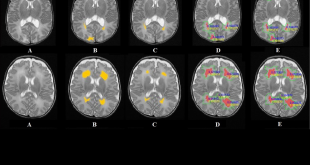Cybersecurity, long viewed as a secondary concern for naval systems, has become increasingly important in recent years. Ships can no longer be seen as isolated objects at sea, naturally protected from cyber-attacks. Yvon Kermarrec, a researcher in computer science at IMT Atlantique, leads a research chair on cybersecurity in partnership with the French Naval School, Thales and Naval Group. He …
Read More »Search Results for: Data
Using hardware to defend software against cyber-attacks
Software applications are vulnerable to remote attacks via the internet or local networks and are cyber-attackers’ target of choice. While methods combining hardware and software have already been integrated into the most recent processors to prevent cyber-attacks, solutions based solely on hardware, which by definition cannot be remotely attacked, could soon help defend our computer programs. Jean-Luc Danger, a researcher …
Read More »Hardware attacks, a lingering threat for connected objects
Viruses, malware, spyware and other digital pathologies are not the only way computer systems’ vulnerabilities are exploited. Hardware attacks are not as well-known as these software attacks, but they are just as dangerous. They involve directly exploiting interaction with a system’s electronic components. These sneak attacks are particularly effective against connected objects. Jean-Max Dutertre’s team at Mines Saint-Étienne is committed …
Read More »GDPR: managing consent with the blockchain?
Blockchain and GDPR: two of the most-discussed keywords in the digital sector in recent months and years. At Télécom SudParis, Maryline Laurent has decided to bring the two together. Her research focuses on using the blockchain to manage consent to personal data processing. The GDPR has come into force at last! Six years have gone by since the European …
Read More »Will the earth stop rotating after August 1st?
By Natacha Gondran, researcher at Mines Saint-Étienne, and Aurélien Boutaud. The original version of this article (in French) was published in The Conversation. It has become an annual summer tradition, much like France’s Music Festival or the Tour de France. Every August, right when French people are focused on enjoying their vacation, an alarming story begins to spread through the …
Read More »A digital twin of the aorta to prevent aneurysm rupture
15,000 Europeans die each year from rupture of an aneurysm in the aorta. Stéphane Avril and his team at Mines Saint-Étienne are working to better prevent this. To do so, they develop a digital twin of the artery of a patient with an aneurysm. This 3D model makes it possible to simulate the evolution of an aneurysm over time, and …
Read More »Mathematical tools for analyzing the development of brain pathologies in children
Magnetic resonance imaging (MRI) enables medical doctors to obtain precise images of a patient’s structure and anatomy, and of the pathologies that may affect the patient’s brain. However, to analyze and interpret these complex images, radiologists need specific mathematical tools. While some tools exist for interpreting images of the adult brain, these tools are not directly applicable in analyzing brain …
Read More »AI, an issue of economy and civilization?
This is the first issue of the new quarterly of the series Annales des Mines devoted to the digital transition. The progress made using algorithms, the new computational capacities of devices (ranging from graphic cards to the cloud), and the availability of huge quantities of data combine to explain the advances under way in Artificial Intelligence. But AI is not …
Read More »Artificial Intelligence hiding behind your computer screen!
Far from the dazzle of intelligent humanoid robots and highly effective chatbots, artificial intelligence is now used in many ordinary products and services. In the software and websites consumers use on a daily basis, AI is being used to improve the use of digital technology. This new dynamic is perfectly illustrated by two startups incubated at Télécom ParisTech: BEYABLE and …
Read More »From springs to lasers: energy’s mysterious cycle
In 1953, scientists theorized the energy behavior of a chain of springs and revealed a paradox in fundamental physics. Over 60 years later, a group of researchers from IMT Lille Douai, CNRS and the universities of Lille and Ferrara (Italy) has succeeded in observing this paradox. Their results have greatly enhanced our understanding of physical nonlinear systems, which are the …
Read More » I'MTech L'actualité scientifique et technologique de l'IMT
I'MTech L'actualité scientifique et technologique de l'IMT









